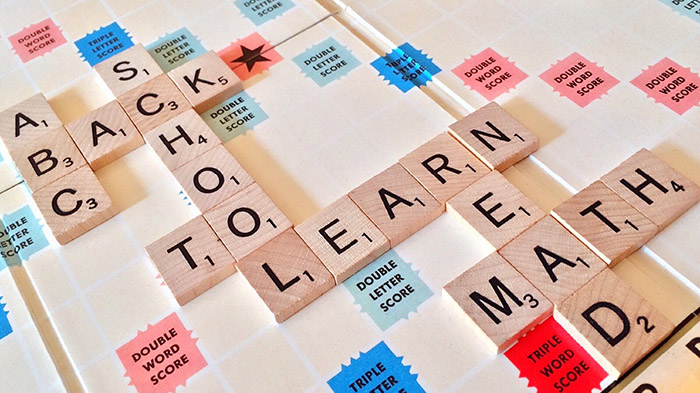Study examines benefits of teaching math in culturally responsive ways

LAWRENCE — Teachers have long known that to reach learners, developing instruction that relates to those students’ experiences can be a valuable tool. That is as true for mathematics as other subjects, yet there had not been a comprehensive review of the research on teaching mathematics to culturally and linguistically diverse learners in culturally responsive ways. Two University of Kansas researchers have published a study showing that mathematics taught with students’ sociocultural backgrounds in mind has a wide range of benefits to learners from diverse backgrounds.
Naheed Abdulrahim, a Chancellor’s Fellow and doctoral candidate, and Michael Orosco, associate professor, both in special education at KU, conducted a qualitative research synthesis in which they analyzed 35 peer-reviewed studies in culturally responsive mathematics teaching conducted from 1993 to 2018. The study, published in the journal Urban Review, found such an approach benefits learners and teachers in seven main themes and includes recommendations for policy, teacher practice and future research.
“Given that culturally responsive mathematics teaching has an established history of research, we needed to conduct a comprehensive review of the literature to describe its current implementation with students from CLD backgrounds,” Abdulrahim said.
“It’s growing in terms of research and its link to promoting student learning and instructional engagement,” Abdulrahim said of culturally responsive mathematics teaching. “The research shows it enhances student mathematics performance, improves student interest and enjoyment in mathematics, persistence in problem-solving and confidence in mathematics.”
Data analysis resulted in seven themes: cultural identity, instructional engagement, educator reflection, high expectations, student critical thinking, social justice and collaboration.
Culturally responsive mathematics instruction capitalizes on students’ funds of knowledge — the cultural and linguistic resources they bring into the classroom. The approach situates teaching and learning mathematics within the context of students’ sociocultural experiences. It provides students with the opportunity to relate the learning of mathematics to their cultural frames of reference (i.e., background knowledge, native language) which helps develop their cultural identities and perceptions of themselves as capable learners of mathematics. That is important as many students find mathematics challenging and may develop mathematics difficulties that persist throughout their education.
Numerous studies described approaches in which collaboration played a central theme. Several promoted collaboration between the students and other engaged family or community members in the teaching and learning process. Several of the collaborative approaches encouraged students to take responsibility for each other’s learning by making sure group members were on task or understood the material. Others engaged parents in the classroom to learn the concepts along with students.
“The collaborative approaches described in the studies facilitated opportunities for learners to draw upon their cultural strengths and experiences to make meaningful connections to new information. Family members were valuable participants this collaboration by being role models for their children and knowledgeable mathematics resources,” Abdulrahim said.
The studies also showed that culturally responsive mathematics approaches encouraged students to use their higher-level thinking skills, such as analysis, reasoning and evaluation. For example, the studies in the synthesis prepared students to use multiple strategies to solve problems and justify their solutions. Several studies also situated mathematics problem-solving within the context of social justice issues, such as power relations, societal oppression and global poverty.
“The social justice component is critically important to culturally responsive mathematics teaching as it raises student awareness of societal injustice and empowers them to become agents of social change,” Abdulrahim said.
Diverse students were not the only ones who benefited from a culturally responsive approach, the analysis found. In several studies, teachers who engaged in the approach practiced ongoing critical reflection in which they examined their own beliefs, values and perceptions about race, ethnicity and culture and how they intertwine to shape their students’ learning experiences. This reflection enabled teachers to examine their own teaching practices and ensure they are culturally responsive to their learners.
The analysis of the studies showed the benefits of culturally responsive mathematics teaching, yet the majority of students from diverse backgrounds do not experience such teaching. The authors recommend that policymakers recognize the significance of the research and the benefits of the approach by creating policy in favor of culturally responsive teaching. Teacher preparation and training programs should be responsible for preparing teachers with the skills and knowledge to implement culturally responsive mathematics teaching. In parallel, further research is needed to investigate its links to student achievement and sociocognitive development.
“Not only do we need to prepare teachers with the tools to become culturally competent mathematics teachers, but we must instill in them the disposition to be culturally responsive,” Abdulrahim said. “This is why critical educator reflection is essential in maintaining practices that bridge the home and school divide.”